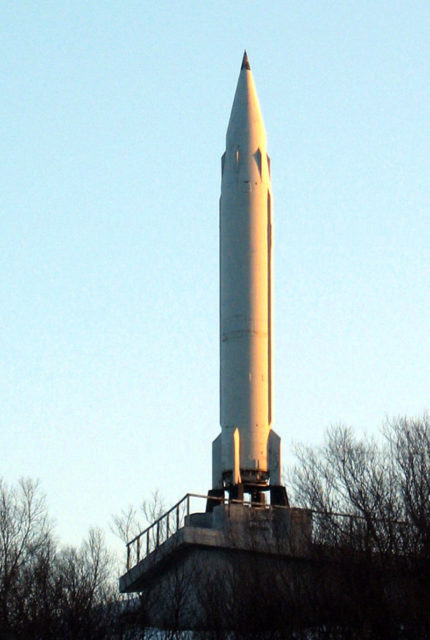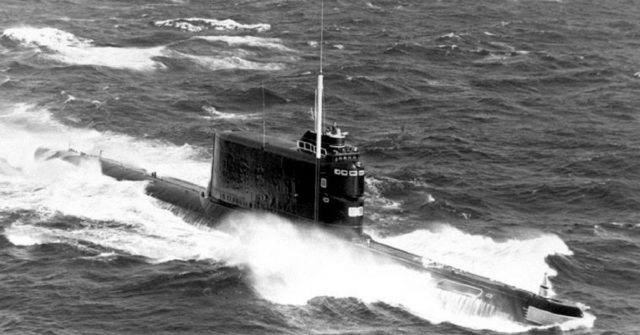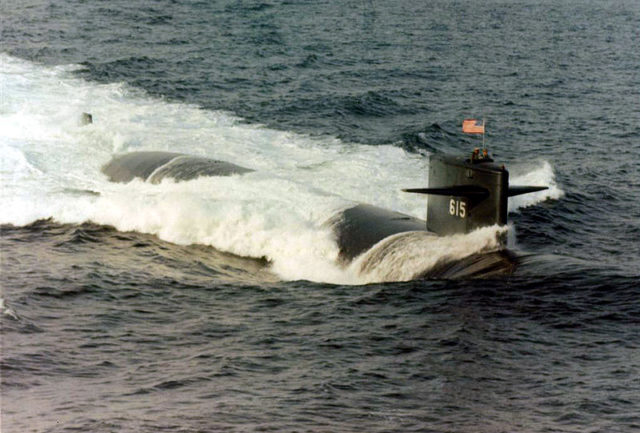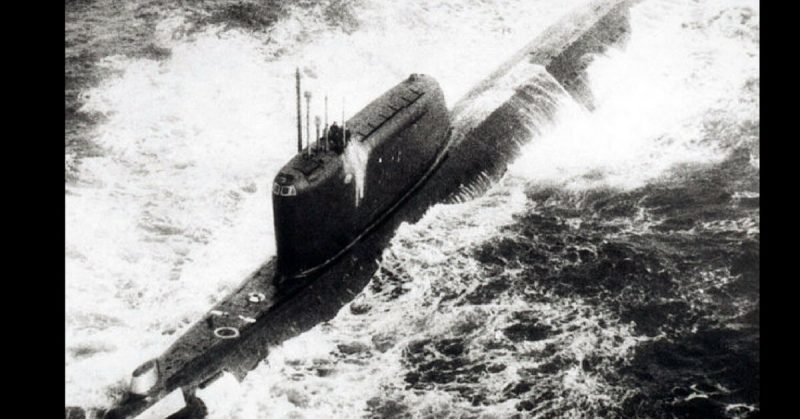The misfortunes of the Soviet nuclear submarine K-19 could fit into some mariner’s folk tales of bad luck at sea. Even during its construction, a series of freak accidents plagued the dockyard workers who were assigned to make the K-19 seaworthy.
In the late 1950s, the Soviet Union was rushing to catch up with American nuclear submarine development, and the K-19 was intended to be the first of its class. The submarine was equipped with nuclear ballistic missiles capable of delivering severe blows to the US coastline.
The project was of great importance as, in 1961 when the submarine made its first voyage, the Cold War was on the brink of becoming thermonuclear. The construction was progressed hastily, which led to ten deaths before the submarine was completed in the shipyard of Severodnivsk in the far north of the USSR.
Project 658 – or Hotel-Class submarine – had a troublesome construction period. Two workers died in a fire accident that broke out in 1958. Six women died of fumes released from glue used for rubber lining on a water cistern. During the loading of missiles, an engineer was crushed by a missile tube, and another one died in a freak accident by falling between two compartments inside the submarine.
After K-19 had been deemed seaworthy in 1959, a christening ceremony was organized to celebrate the newest achievement of the Soviet Union and the pride of its Navy.
Against naval tradition, a man, instead of a woman, was chosen to break the champagne bottle against the ship during the launch. As Captain 3rd Rank V. V. Panov swung the bottle against the submarine’s stern, the bottle did not break, but bounced off. The crew witnessed this bad omen, further developing theories the ship was in some way cursed.

In 1960, due to confusion among the crew, the nuclear reactor on board the submarine was improperly operated, bending one of the control rods. The repairs delayed the first voyage and some crew members, including the captain were demoted.
The command of K-19 was then given to Captain 1st Rank Nikolai Vladimirovich Zateyev, an ambitious and capable officer who received an early promotion from Marshall Zhukov, Minister of Defense for the USSR.
After several test runs, the questionable quality of K-19’s construction surfaced. The ship lost the rubber coating from its hull and had to go through additional repairs. Several other malfunctions were reported during the trial period, including the flooding of the reactor compartment. Everything pointed to defects in the design, but as the ship was in the spotlight due to the arms race, many of these problems were neglected by high-ranking officials.
On April 30, 1961, the submarine was finally commissioned. Carrying a crew of 139 the K-19 also hosted a variety of missile men, reactor officers, torpedo men, doctors, cooks, stewards, and several observing officers.
During its first official mission, the K-19 was conducting exercises in the North Atlantic, near the south tip of Greenland. On July 4, 1961, the submarine developed yet another malfunction. A major leak in the reactor caused the coolant system to fail, leading to a dangerous rise in temperature within the nuclear core. As well as this potential catastrophe, the long-range radio system was broken, so there was no way of contacting Moscow to advise on their situation.
The K-19 was operating near one of the NATO bases in the Atlantic Ocean. The Captain’s primary concern was the possibility of causing the outbreak of the Third World War with a nuclear explosion that would outmatch Hiroshima and Nagasaki together in the close vicinity of the base.

The reactor was shut down but continued to heat up reaching a temperature of 800 °C (1,470 °F). It was heading towards an explosion and needed to be cooled down urgently. Captain Zatayev ordered an engineering team directly into the reactor room to create a makeshift cooling system by cutting one of the valves on the reactor and connecting it to a water-supplying pipe.
The men were aware of the dangers of radiation but followed their orders although there was a lack of safety equipment on board. The high radiation level took its toll. After the successful repair, all the men who were part of the engineering team suffered from acute radiation sickness. They were eventually hospitalized, but all died within a month.
Radioactive steam containing fission products released during the opening of the sealed reactor room were drawn into the ship’s ventilation system contaminating to some extent the entire submarine. Everyone was at risk of radiation poisoning.

Due to this accident, Captain Zatayev aborted the mission and headed south in the hope of encountering a friendly submarine that was supposed to be in the sector.
An American destroyer also picked up a short-range distress call from the K-19 and began shadowing it. The Americans offered their assistance, but Zatayev refused, as he was afraid he would be deemed a traitor back in the USSR, a punishment worse than death for a Soviet officer. He could not let the Americans get a hold of the first Soviet nuclear submarine, but his crew was getting anxious. Mutiny was in sight, and as time dragged on, Zatayev was losing his options.
Luckily, the diesel-powered S-270 appeared on the horizon. Despite orders to stay on board the K-19 and wait for the tow boat to carry them back, the captain evacuated the submarine for the S-270.
Fifteen more crew members died in the next two years. The K-19 was back in service several months after the accident but bad luck followed it until its decommission in 1990.
The submarine was involved in a collision accident in November 1969, with the American submarine USS Gato in the Barents Sea, suffering heavy damage. A fire accident a few years later claimed the lives of another twelve sailors on board the K-19. Due to its reputation, the submarine was nicknamed Hiroshima.
